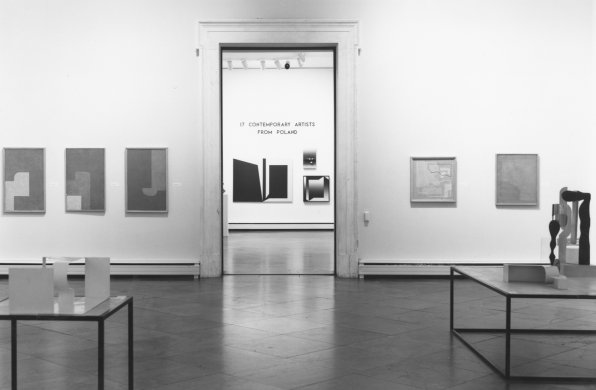Constructivism in Poland, 1923–1948
Tuesday, September 28, 1976–Sunday, October 31, 1976
Co-organized with The Museum of Modern Art, under the auspices of the International Council of The Museum of Modern Art and the Albright-Knox Art Gallery, Constructivism in Poland, 1923–1948 was the first major survey exhibition of Polish Constructivists in the United States. It featured more than fifty examples of sculpture, painting, photography, and graphic design, all of which were preserved during World War II by the Museum Sztuki, Łódź.
The majority of the works featured were by five artists: Henryk Berlewi, Karol Hiller, Katarzyna Kobro and her husband, Władysław Strzemiński, and Henryk Stażewski. Their work, though influenced by the concept of nonobjective abstract art first formulated by the Russian Constructivists, took this influence in revolutionary new directions and marks an important moment in the history of modern art.
Originally presented at The Museum of Modern Art, the exhibition traveled to the Art Institute of Chicago, the Detroit Institute of Arts, the Musée d'Art Contemporain in Montreal, and the Albright-Knox Art Gallery.
